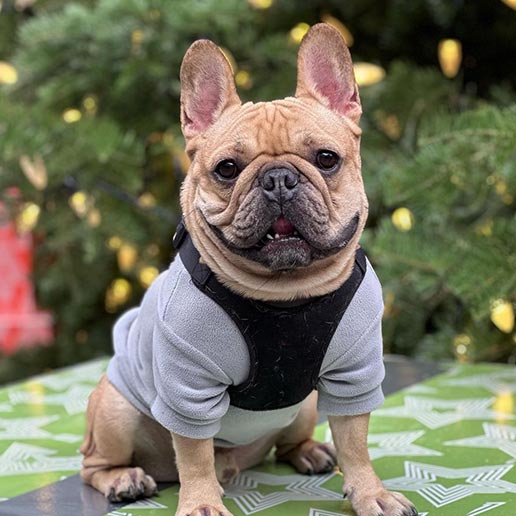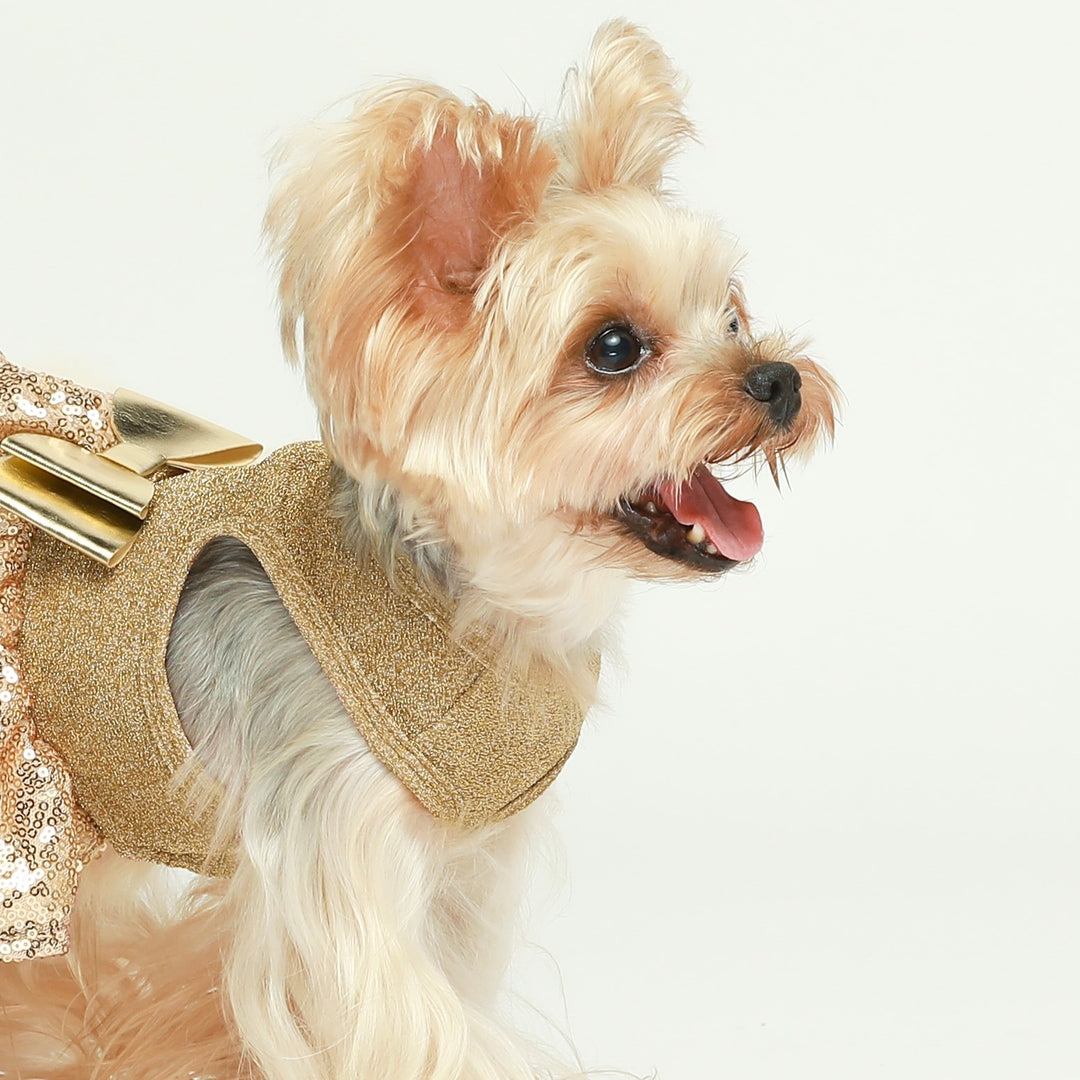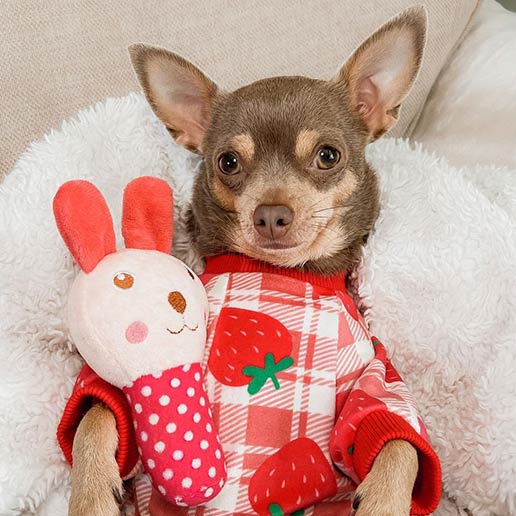How to Help Your Dog Wear Clothes & Feel Comfortable
Ever thought about adding a bit of pizzazz to your pup’s wardrobe? It’s not just about making them look adorable (though that’s a big plus)—clothes can keep your dog cozy, safe, and looking sharp. But here’s the scoop: taking it slow is key.You want to make sure your dog is as happy wearing clothes as you are seeing them in that cute new outfit.
If we rush it or squeeze them into something that pinches, we’re heading for a dog-downer, not a fashion show. So, I’m going to walk you through this one paw at a time. We’ll talk finding the perfect fit, choosing materials that won’t make them itch, and the golden rule—positive vibes only.

How Can You Prepare for Successfully Dressing Your Dog?
Prep Your Pup for Fashion That’s Fur-Real
Think of getting your dog dressed up like planning the ultimate playdate. You want it all laughs and wagging tails, no room for side-eye or whimpers. Start by figuring out what your furry friend is comfy with, choosing the right kind of cozy for their wardrobe, and making sure that new outfit fits like a dream.
What’s Your Dog’s Style Vibe?
Dogs are just like us when it comes to fashion—each one’s got their own vibe. Some might be ready to hit the runway, while others may seem a bit bashful. Take a good look at your buddy’s personality and past fashion flings to set the pace right. For the more timid tail-waggers, we’re talking baby steps into the world of chic.

Picking the Snuggle-Worthy Stuff
When you’re hunting for fabrics, think snug-as-a-bug-in-a-rug levels of comfort. Soft, airy materials like cotton or bamboo are spot-on—they’ll keep your pup cool and comfy. Scratchy materials? No, thanks. We want happy pups, not scratchy ones.
Fitting Dogs Just Right
Getting the size spot-on is like striking gold—too loose and they’ll trip, too tight and they’ll tap out. Measure your dog before you splurge on that cute outfit and compare it to the size chart. Remember, your dog should be free to do dog things: run, jump, and lounge. Watch out for any spots where those new clothes might pinch or rub.

Starting Simple in Dog Dress-Up
Ease into it with something simple—a spiffy bandana or funny shirts—and work your way up. These are the first paw-steps toward becoming a style-savvy pooch. Once your dog’s giving you the thumbs-up (in spirit, since, well, no thumbs), you can venture into fancier threads. But hey, comfort over catwalk, always—if it looks like a chew toy, it probably isn’t a great choice.
Ready to roll out the red carpet? With these pointers, your dog will be ready to parade around and show off their fab fashion sense with a happy bark and a bouncing stride!
How to Help Your Dog Love Wearing Clothes Using Desensitization and Counter-Conditioning
If your furry friend is a bit unsure about wearing clothes, don’t worry! There are two powerful techniques you can use to help them feel more comfortable and even enjoy getting dressed up: desensitization and counter-conditioning.

Gradual Desensitization: Taking It Step by Step
Gradual desensitization involves introducing your dog to clothing little by little. Start by simply showing your dog the clothing from a distance and giving them treats or praise for staying calm. Then, slowly move the clothing closer, letting your dog sniff and check it out. As your dog gets more comfortable, try draping the clothing over their back for short periods, gradually increasing the time they wear it.
Pairing Clothing with Positive Experiences
Counter-conditioning is all about making wearing clothes a fun and enjoyable experience for your dog. When your dog is wearing clothing, engage them in activities they love, like going for a walk, playing with their favorite toy, or getting tasty treats. Over time, your dog will start to associate wearing clothes with these positive experiences, making the whole process much more pleasant.

Systematic Desensitization for Dogs with Clothing Aversions
If your dog has a strong dislike for clothing, systematic desensitization can be a real game-changer. This approach involves breaking down the dressing process into small, manageable steps and only moving on when your dog is totally comfortable with each step. For example, you might start by rewarding your dog for just looking at the clothing, then for giving it a little sniff, and so on until they’re comfortable wearing the item.
Building Positive Associations One Treat at a Time
Counter-conditioning helps change your dog’s emotional response to clothing by pairing it with things they love. Each time your dog sees, smells, or wears clothing, offer them a high-value treat or engage them in a fun activity. With time and patience, your dog will start to associate clothing with positive experiences, making getting dressed a lot more enjoyable for both of you.

By using these desensitization and counter-conditioning techniques, you can help your dog overcome any fears or anxieties related to wearing clothing, creating a more positive and stress-free dressing experience. Just remember to take it slow, be patient, and always keep it fun!
How Do You Keep Your Dog Comfy in Their Fashion Wear Over Time?
Making Sure Clothes Are a Cuddle, Not a Crunch
Your pup’s gotten used to that snazzy sweater, but the comfort mission doesn’t end there. Keep an eye on how they’re doing, tweak the fit as needed, and keep their gear clean to avoid any itch or ouch. Here’s your go-to guide for the long haul.
Why Should You Keep a Watchful Eye on Your Pup’s Body Language?
Just like you’d fidget in an itchy sweater, your dog will tell you if something’s not right. Watch out for things like scratching more than usual, nipping at their outfit, or just seeming out of sorts. If you spot these signs, it’s time for a quick change. Comfort is king, so let’s make sure their fashion is feel-good.

How Can You Tell When It’s Time for a Clothing Tweak?
Ever seen your dog try to wiggle out of a sweater that’s hugging a bit too tight? Or maybe their outfit’s hanging off them like they’re playing dress-up in your closet. Either way, it spells ‘time for a tweak.’ If your furry friend can’t zoom around without something pulling or dragging, it’s adjustment o’clock. Give them a once-over for any tight spots or droopy areas and get them sorted.
What Are the Signs That Your Dog’s Skin Isn’t Happy?
Stay on the lookout for giveaway signs that your pup’s outfit is rubbing them the wrong way. Red patches, little lumps, or sore spots? These are all red alerts. If you spot trouble, let your dog take a break from their fashion statement and go back to basics. If those skin woes don’t clear up pretty quick, a vet should be your next call. Oh, and stick with fabrics that let their skin breathe—it’s like a spa day in clothing form.

How Often Should You Throw the Laundry In?
After a gym session, dogs’ clothes need a ```markdown
regular refresh. Aim to wash their wardrobe every few outings, especially if they’ve been rolling around in mud-puddle heaven. Choose cleaning products that are safe for pets—no harsh chemicals—and leave out fabric softeners since they’re not the best mix for your dog’s fur. This way, no funky smells will linger, and your dog’s skin will stay as fresh as daisies.Regular bathing is vital to prevent odours and keep skin healthy.
By nailing these care basics, you’re guaranteeing your dog stays both swanky and snug. They’ll thank you for it by rocking their outfits with tail wags. And who knows? With your help, they just might become the neighborhood’s next top model!
How to Troubleshoot Common Dog Clothing Issues
Despite careful preparation, you may encounter some issues when dressing your dog. Here’s how to address them:

Resistance or Avoidance
If your dog resists wearing clothing, revisit desensitization and counter-conditioning techniques using high-value treats and positive reinforcement.
Excessive Scratching or Biting
If your dog scratches or bites at their clothing excessively, check for skin irritation or ill-fitting areas. Try a different style or material for comfort.
Overheating or Discomfort
In warm weather, choose lightweight, breathable materials and avoid overdressing. Watch for signs of overheating and remove clothing if needed.

Ill-Fitting or Uncomfortable Clothing
If your dog’s clothing is too tight, loose, or causing discomfort, make adjustments or try a different size or style. Prioritize comfort over fashion.
Address these issues promptly and patiently to help your dog feel at ease in their clothing.
Conclusion
Introducing your dog to clothing requires patience, positivity, and a gradual approach. Prioritize your dog’s comfort and well-being by selecting the right clothing options and using positive reinforcement techniques. Pay attention to their body language and make adjustments as needed. With the right approach, you and your dog can enjoy the benefits of dressing up together!














